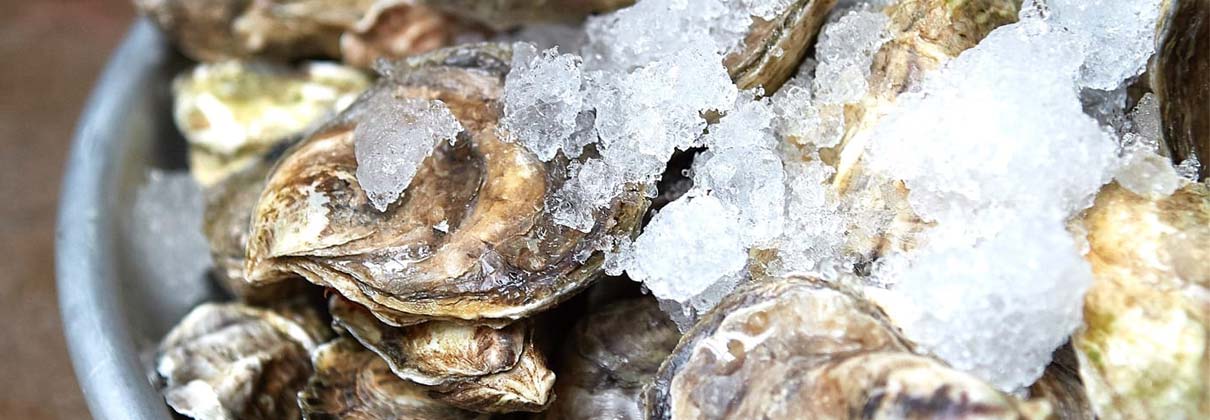Oysters are bivalve mollusks that thrive in salty ocean habitats. But what happens when oysters end up in freshwater environments? Can they adapt and survive for extended periods?
I did extensive research on oyster biology and tolerances to find out just how long they can live in freshwater. Here’s a comprehensive guide with everything you need to know
Overview of Oyster Habitats
Oysters are adapted to saline ocean environments. Most commercial oyster farming takes place in coastal saltwaters with optimal salinity.
However, oysters can also live in brackish water, which is a mix of salt and fresh. Brackish habitats include estuaries, mangroves, and tidal rivers. The slightly reduced salinity of 10-25 ppt (parts per thousand) is acceptable for oysters.
Pure freshwater with zero salinity is not an ideal long-term habitat for oyster survival. But they can persist for a limited time before dying off.
How Long Oysters Survive in Freshwater
According to marine biology experts, oysters can only survive in freshwater for 7-10 days maximum. The extremely low salt concentration causes them to weaken and die beyond this timeframe.
Prolonged freshwater exposure is fatal to oysters. If kept in freshwater for 2-3 weeks straight most oysters will die.
This tolerance varies slightly by species. Eastern oysters are more resilient, while Pacific oysters have lower freshwater tolerance. But all will eventually perish after too long in freshwater.
Why Oysters Die in Freshwater
Oysters are osmoconformers, meaning their internal salt content matches their environment. Their cells contain vital salts like potassium, calcium, and magnesium ions.
In ocean water, oysters pump water out constantly to maintain a higher internal sodium level. But in freshwater, their internal concentration is higher, causing water to flow into cells. This swells and ruptures the cells through osmotic shock.
Without proper salt balance, oysters cannot maintain metabolism or filter food and water. The osmotic stress ultimately kills them if in freshwater too long.
Proper Handling of Oysters After Freshwater Exposure
If harvesting oysters from freshwater, proper post-harvest handling is crucial:
- Keep oysters chilled below 40°F (4°C)
- Store in a container with damp towels on top
- Do not seal oysters in airtight containers
- Place curved shell downward to retain moisture
- Use oysters within 1-2 days
- Discard any with cracks or foul smells
- Cook thoroughly until shells open fully before eating
Proper storage gives oysters the best chance of survival when coming from freshwater. But it’s safest to eat them as soon as possible.
Returning Oysters to Saltwater
If moved back to saltwater quickly, oysters can recover and regain their osmotic balance. One study found Eastern oysters could survive 8-10 days in freshwater if returned to higher salinity shortly after.
However, their survival depends on the duration in freshwater, oyster species, temperature, and rate of salinity change. To help oysters adapt, slowly increase salinity over several hours.
But there are no guarantees of survival after freshwater exposure. It’s best to eat them ASAP.
Are Freshwater Oysters Safe to Eat?
Freshwater oysters require caution before eating:
- Cook thoroughly to reduce bacteria/virus risks
- Check water quality where harvested
- Discard any dead oysters
- Avoid raw consumption due to pathogen risk
- Refrigerate immediately and eat within 1-2 days
- Know your health risks if immuno-compromised
Properly handled freshwater oysters can be safe to eat. But when in doubt, it may be best to avoid consumption.
Impact of Freshwater on Oyster Taste
Freshwater negatively impacts the taste of oysters:
- Lack of briny, salty ocean taste
- Possible metallic or bitter tastes
- Mushier texture
- Higher risk of spoilage flavors
The change in water nutrients alters their digestion and food absorption, creating less appealing flavors. For best taste, only eat oysters from saltwater.
Can Oysters Be Farm Raised in Freshwater?
A few oyster species are commercially grown in lakes or dams, like Chinese pond oysters. But these are genetically unique species adapted to lower salinity.
Saltwater oysters like Eastern, European, and Pacific varieties cannot be successfully farmed long-term in freshwater. The low salinity would eventually kill them.
Oysters could potentially be “finished” in brackish water right before harvest. But they need initial breeding and growth in ocean habitats.
While oysters can tolerate limited freshwater exposure, extended periods beyond 7-10 days are fatal. For their health and taste, keep oysters in full saltwater conditions. If consuming freshwater oysters, handle with care and cook thoroughly as a safety precaution.

Freshwater Mussel Filtration Timelapse
FAQ
Can oysters survive in freshwater?
How long can oysters sit in water?
Can you store oysters in freshwater?
How long do unshucked oysters live?
How long can oysters live outside the water?
In proper storage conditions, oysters can survive 2 to 3 weeks outside of the water, clams up to 5-6 days, and mussels up to 2-3 days, but we strongly recommend eating them as soon as possible.
How long do oysters last?
The type of oyster you have will determine its shelf life. For most varieties, it’s safe to say you should eat them within a week. The colder the temperature, the longer the oyster shelf life. Some people choose to keep their oysters in the fridge for up to two weeks or even longer. With proper refrigeration, that’s totally okay.
How long do oysters stay fresh after harvest?
Never store oysters in an airtight container or even a closed drawer because they need air circulation to survive. When stored properly, raw oysters will stay fresh for about one week after the time of harvest. Per Food and Drug Administration requirements, all live mollusks are sold with a tag indicating exactly when and where they were harvested.
Can oysters survive in cold water?
Oysters can survive in water that contains 5-35 ppt. Oysters thrive in salinity that ranges from 14-28 ppt. The optimum water temperature for oysters to survive is between 68-90 degrees Fahrenheit, but adult oysters can tolerate water as cold as 38 degrees and as hot as 120 degrees for short periods of time.
